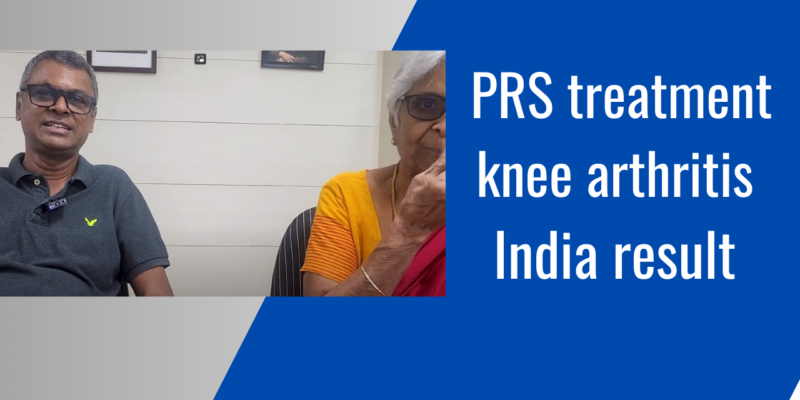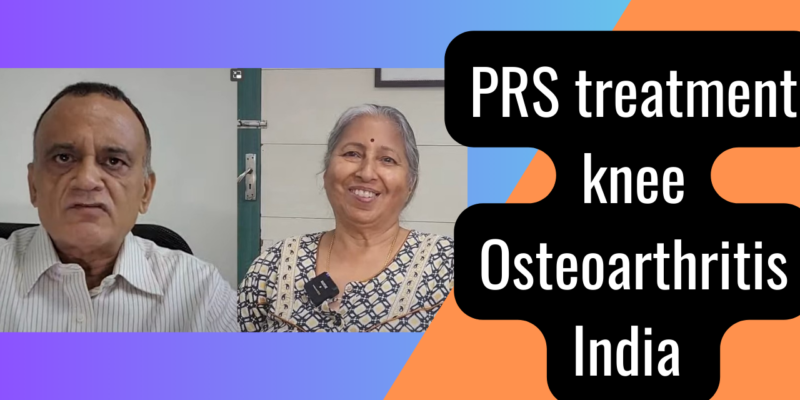In this article i will elaborate how Platelet rich stroma treatment can stem the pain of Osteoarthritis.
You will hear from an eighty year old lady in Tamil and her son in English in the video at first.
Do you wish to learn about this latest alternative to knee replacement?
Platelet-rich plasma (PRP) treatment is a type of orthobiologic treatment that has been used to treat knee osteoarthritis in India. It combines two different types of biological materials: platelet-rich plasma (PRP) and stromal vascular fraction (SVF).
What is PRP?
PRP is a concentrated solution of platelets and growth factors that are derived from a patient’s own blood. It is often used in regenerative medicine to promote tissue healing and reduce inflammation.
What is SVF?
SVF, on the other hand, is a mixture of stem cells, immune cells, and other regenerative cells that are derived from adipose tissue (fat). SVF is also known to have regenerative properties and is commonly used in stem cell therapy.
In PRS treatment, a small amount of adipose tissue is harvested from the patient and processed to extract the SVF. The PRP is then combined with the SVF to create the PRS solution. This PRS solution is then injected into the area of injury or degeneration to promote tissue regeneration and repair
How does stromal vascular fraction combat the inflammatory cause of knee osteoarthritis?
Stromal vascular fraction (SVF) is believed to combat the inflammatory cause of knee osteoarthritis through its regenerative properties. SVF contains a mixture of different cell types, including stem cells and immune cells, which work together to modulate inflammation and promote tissue repair.
- Anti-Inflammatory Effects: Some of the cells present in SVF, such as mesenchymal stem cells, have anti-inflammatory properties. When injected into the knee joint, these cells can help suppress the release of pro-inflammatory molecules and cytokines that contribute to the inflammation seen in osteoarthritis. By reducing inflammation, SVF may help alleviate pain and slow down the progression of the disease.
- Tissue Repair and Regeneration: SVF contains cells that have the ability to differentiate into various cell types, including cartilage-producing cells. In knee osteoarthritis, the protective cartilage cushioning the joint gradually wears away. SVF injections may promote the growth of new cartilage-like tissue, contributing to joint repair and improved function.
- Immunomodulation: SVF contains immune cells that play a role in regulating the immune response. These cells can help create an environment that is less hostile to the joint, reducing the immune system’s attack on healthy tissue and further decreasing inflammation.
- Growth Factors and Cytokines: SVF is rich in growth factors and cytokines, which are signaling molecules that promote cell growth, differentiation, and healing. These factors can stimulate the body’s natural healing processes and support the repair of damaged tissues. If you desire to undergo this latest treatment, seek an appointment with Dr.A.K.Venkatachalam by filling out the contact form in www.orthobiologicsurgeryindia.com


